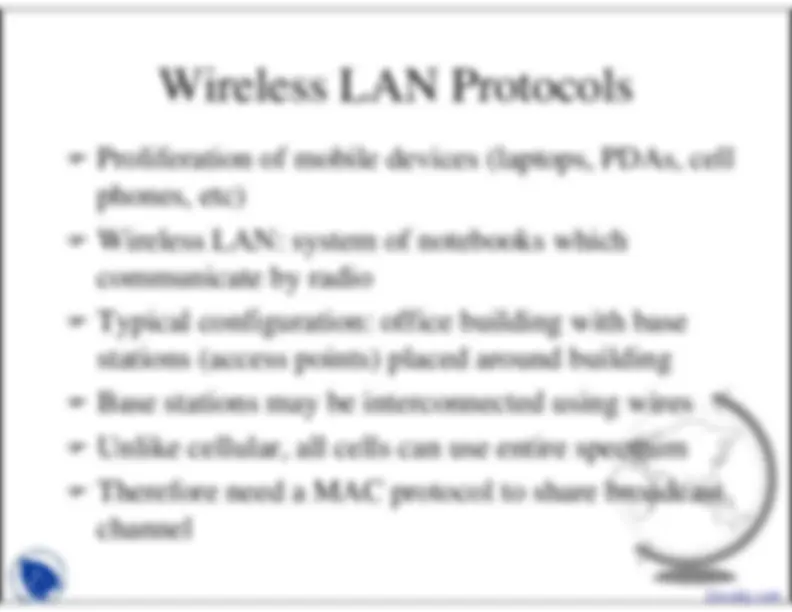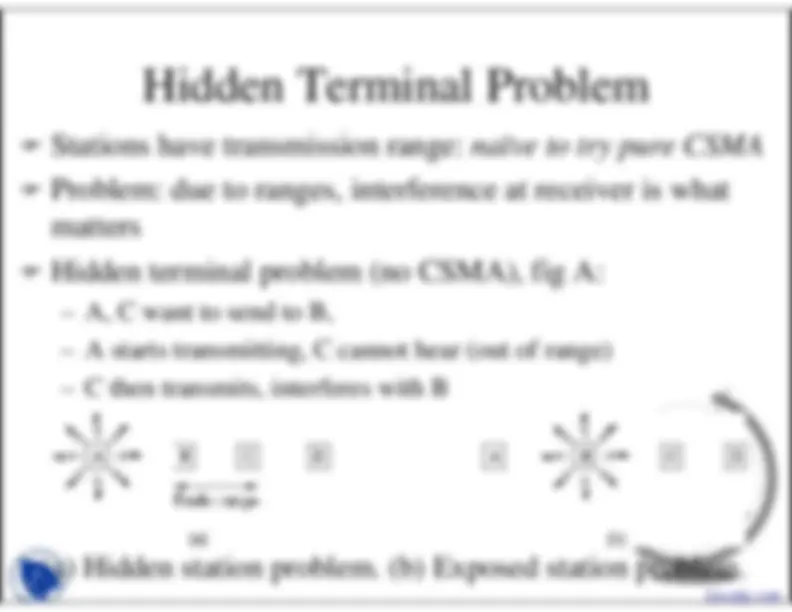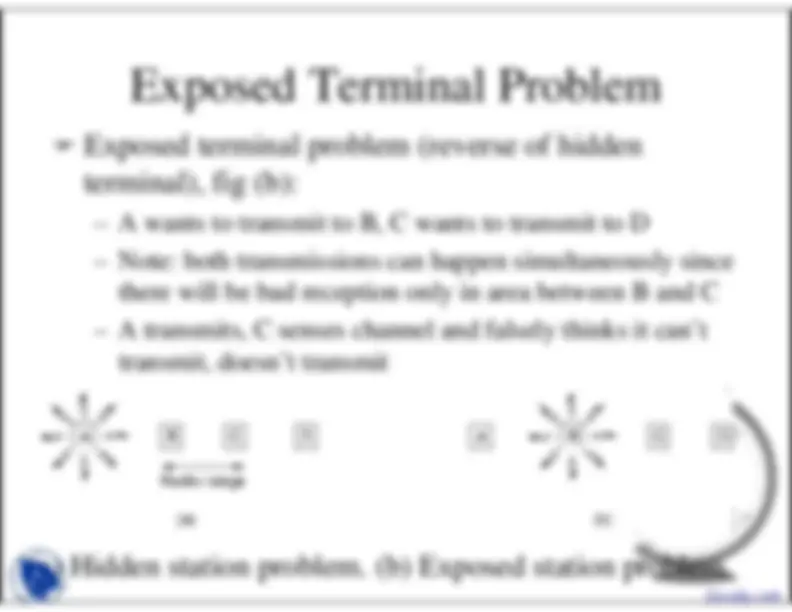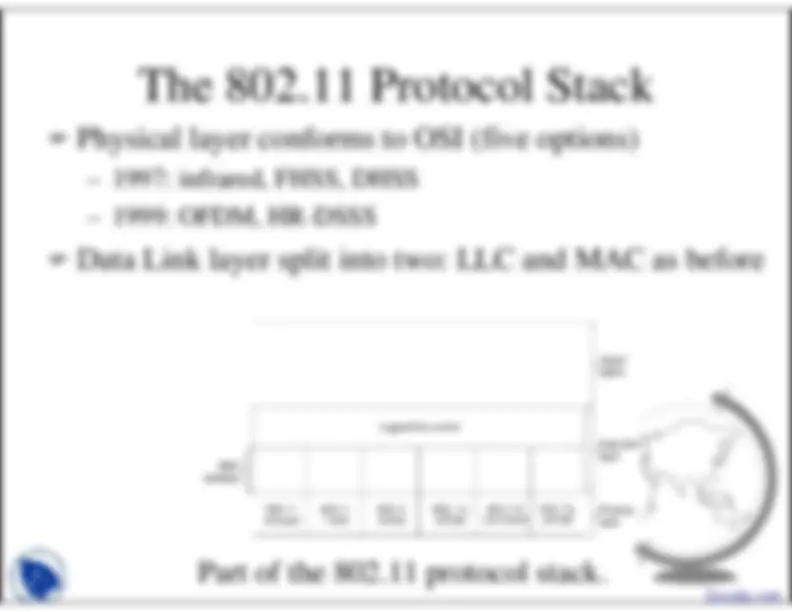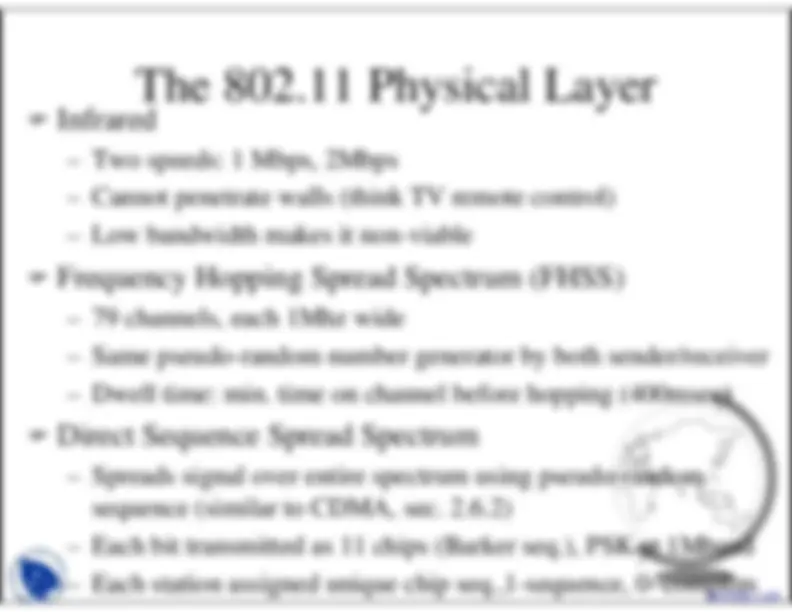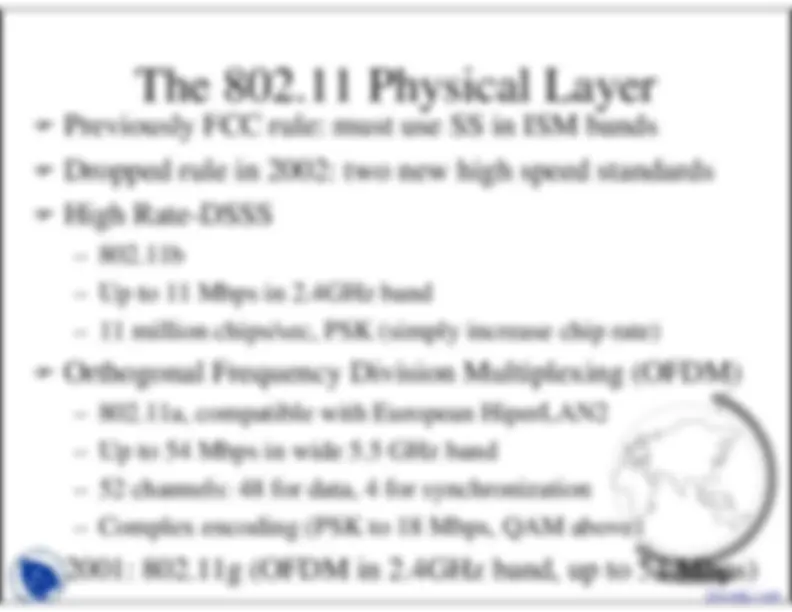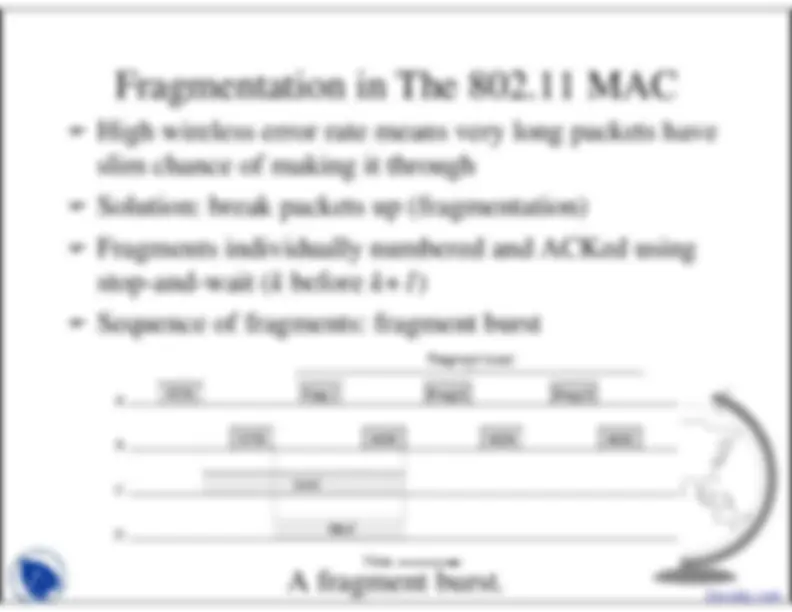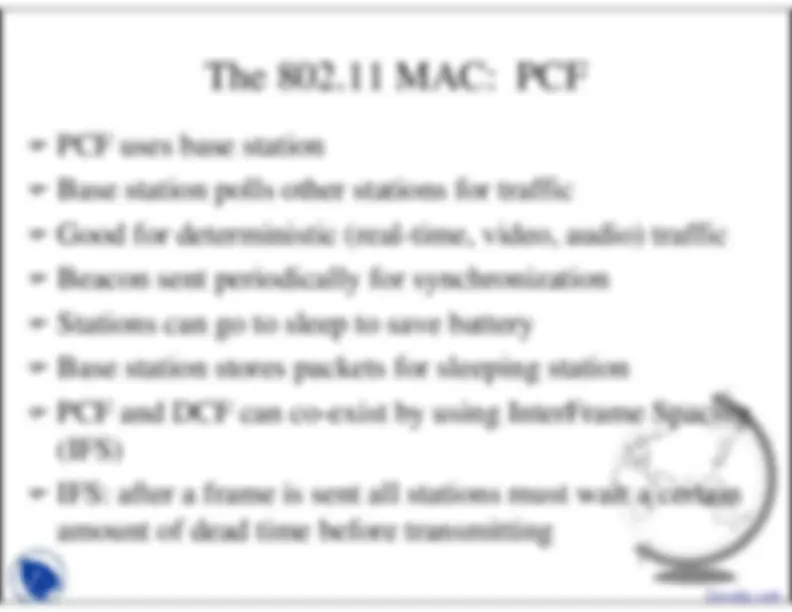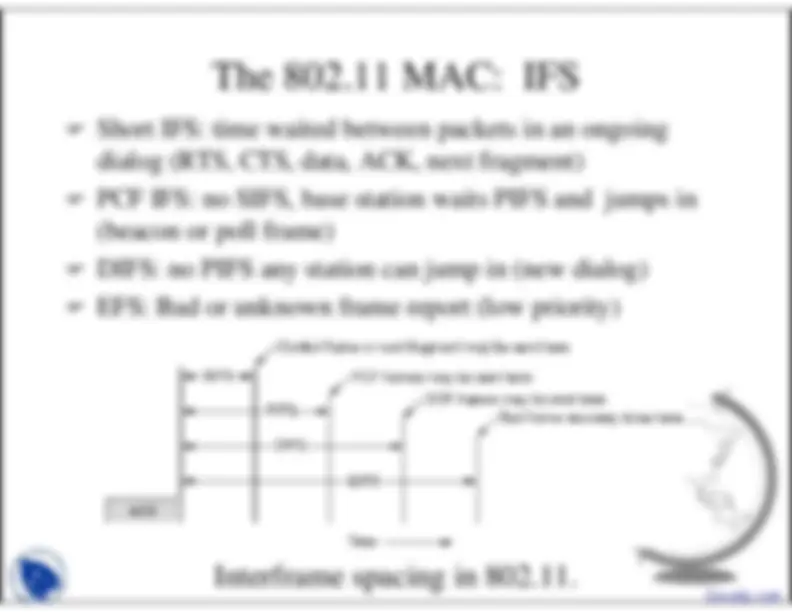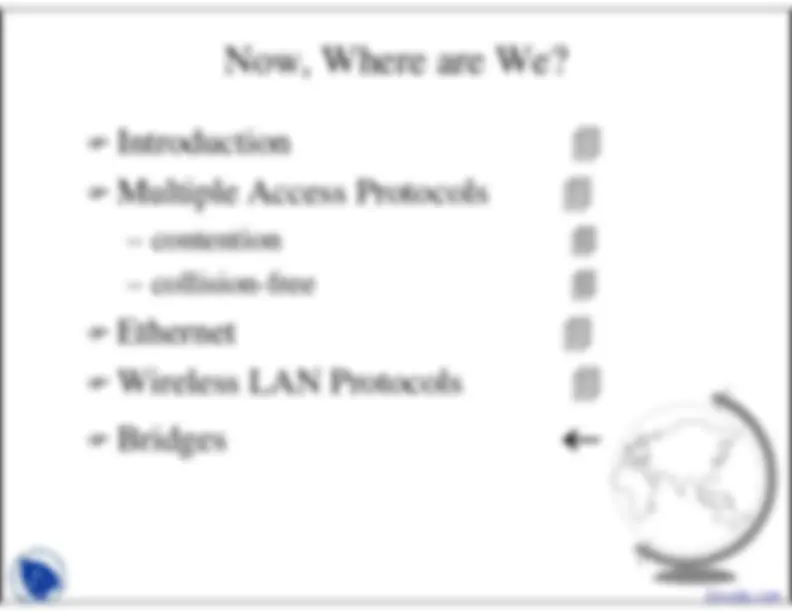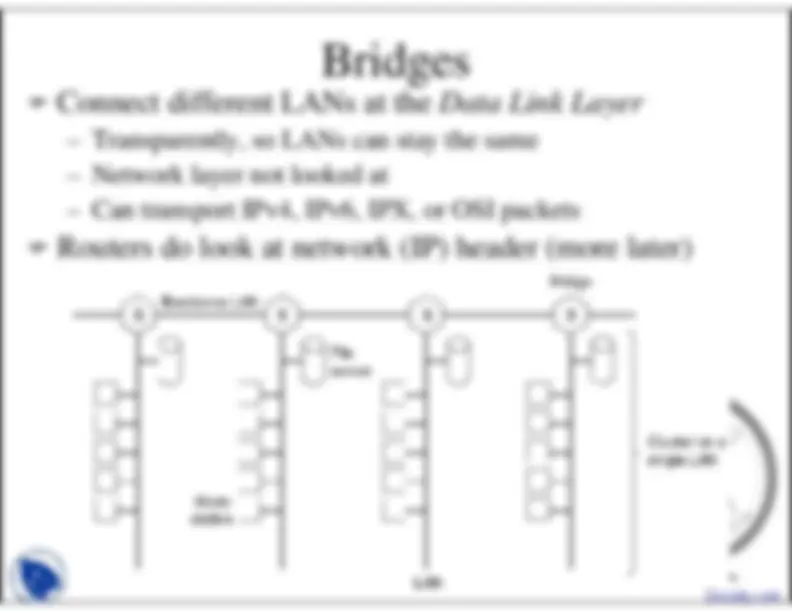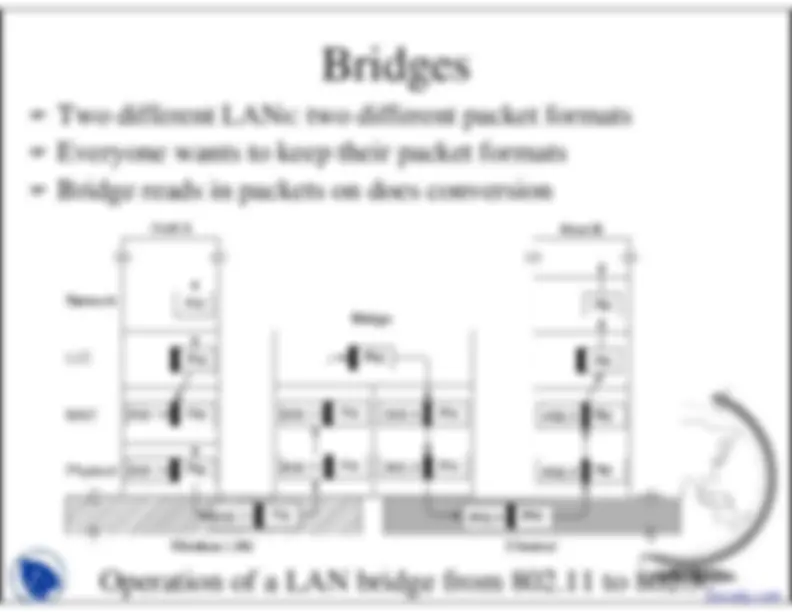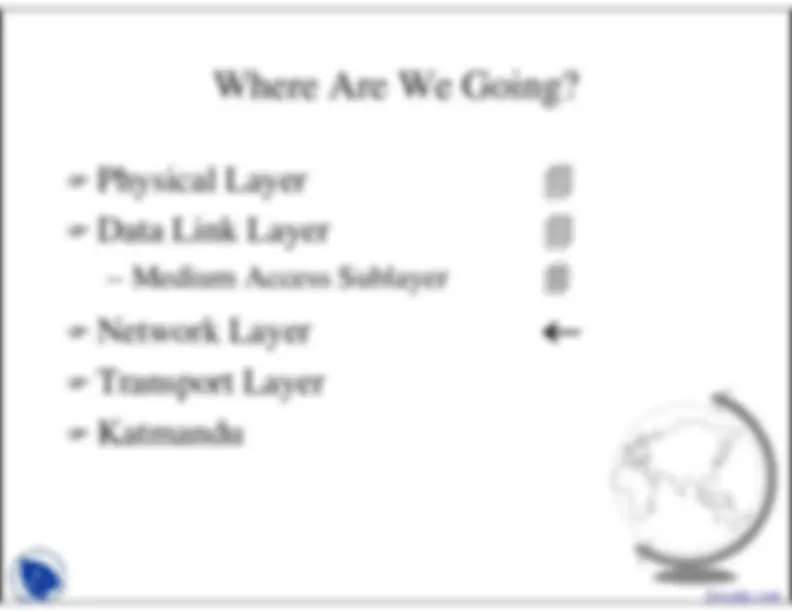Download Wireless LAN Protocols: MAC Sublayer and IEEE 802.11 Standard and more Slides Social Work in PDF only on Docsity!
Introduction to LAN/WAN
Medium Access Sublayer (Part III)
Now, Where are We?
Introduction
Multiple Access Protocols
Ethernet
Wireless LAN Protocols
Bridges
Hidden Terminal Problem
(a) Hidden station problem. (b) Exposed station problem.
)
Stations have transmission range:
naïve to try pure CSMA
)
Problem: due to ranges, interference at receiver is whatmatters
)
Hidden terminal problem (no CSMA), fig A:
- A, C want to send to B,– A starts transmitting, C cannot hear (out of range)– C then transmits, interferes with B
Exposed Terminal Problem
(a) Hidden station problem. (b) Exposed station problem.
)
Exposed terminal problem (reverse of hiddenterminal), fig (b):
- A wants to transmit to B, C wants to transmit to D– Note: both transmissions can happen simultaneously since
there will be bad reception only in area between B and C
- A transmits, C senses channel and falsely thinks it can’t
transmit, doesn’t transmit
IEEE 802.11 WLAN Protocol
)
IEEE 802.11: Wireless LAN standard
- Protocol Stack– Physical Layer– MAC Sublayer Protocol– Frame Structure– Services
)
Possible configurations: with or without base station
)
Operate in free ISM bands (900MHz, 2.4GHz, 5.5GHz)
The 802.11 Protocol Stack
Part of the 802.11 protocol stack.
)
Physical layer conforms to OSI (five options)
- 1997: infrared, FHSS, DHSS– 1999: OFDM, HR-DSSS
)
Data Link layer split into two: LLC and MAC as before
The 802.11 Physical Layer
)
Previously FCC rule: must use SS in ISM bands
)
Dropped rule in 2002: two new high speed standards
)
High Rate-DSSS
- 802.11b– Up to 11 Mbps in 2.4GHz band– 11 million chips/sec, PSK (simply increase chip rate)
)
Orthogonal Frequency Division Multiplexing (OFDM)
- 802.11a, compatible with European HiperLAN2– Up to 54 Mbps in wide 5.5 GHz band– 52 channels: 48 for data, 4 for synchronization– Complex encoding (PSK to 18 Mbps, QAM above)
)
2001: 802.11g (OFDM in 2.4GHz band, up to 54 Mbps)
The 802.11 MAC Protocol
)
Two modes:
- Point Coordination Function (PCF) (with base station)– Distributed Coordination Function (DCF) (no BS)
)
DCF must be implemented, PCF optional
)
Two DCF options:
- Both use CSMA/CA (physical and virtual carrier sensing)– One without RTS-CTS– Other with RTS/CTS, (Based on MACAW)– Exponential backoff algorithm (like ethernet) if collision
(Collision Avoidance)
Fragmentation in The 802.11 MAC
A fragment burst.
)
High wireless error rate means very long packets haveslim chance of making it through
)
Solution: break packets up (fragmentation)
)
Fragments individually numbered and ACKed usingstop-and-wait (
k
before
k+
)
Sequence of fragments: fragment burst
The 802.11 MAC: PCF
)
PCF uses base station
)
Base station polls other stations for traffic
)
Good for deterministic (real-time, video, audio) traffic
)
Beacon sent periodically for synchronization
)
Stations can go to sleep to save battery
)
Base station stores packets for sleeping station
)
PCF and DCF can co-exist by using InterFrame Spacing(IFS)
)
IFS: after a frame is sent all stations must wait a certainamount of dead time before transmitting
The 802.11 Frame Structure
The 802.11 data frame.
802.11 Services
)
Conformant wireless LANs must provide nine services
-^
5 distribution, 4 station services
)
Distribution Services (managing cell membership)
-^
Association: connect to base station
-^
Disassociation: disconnect from base station
-^
Reassociation: handoff, moving from cell to cell
-^
Distribution: how base station routes packets (local or backbone)
-^
Integration: address translation between different WLANs
)
Intracell Services (activity within a cell)
-^
Authentication: secure join
-^
Deauthentication: secure leave
-^
Privacy: encryption (uses RC4, by Ronald Rivest)
-^
Data Delivery (heart of 802.11, already discussed)
Bridges
)
Connect different LANs at the
Data Link Layer
- Transparently, so LANs can stay the same– Network layer not looked at– Can transport IPv4, IPv6, IPX, or OSI packets
)
Routers do look at network (IP) header (more later)
Bridges
Operation of a LAN bridge from 802.11 to 802.3.
)
Two different LANs: two different packet formats
)
Everyone wants to keep their packet formats
)
Bridge reads in packets on does conversion

